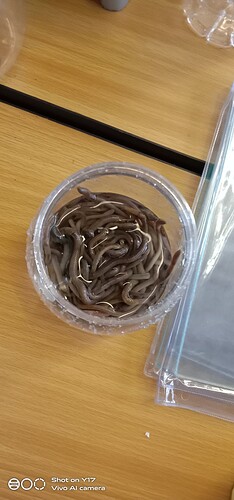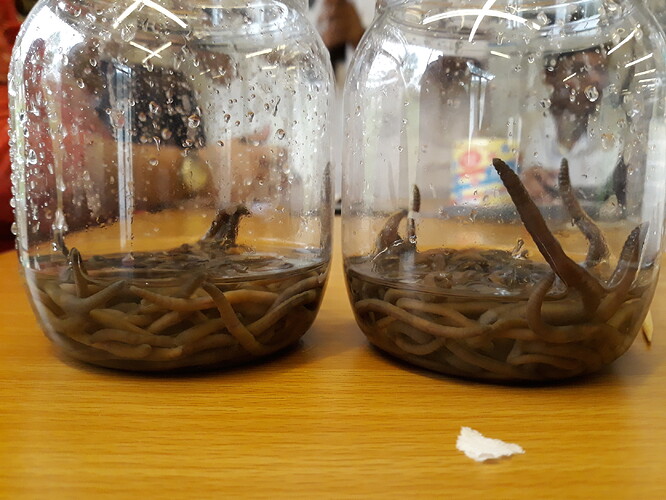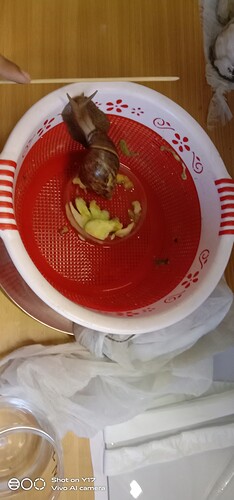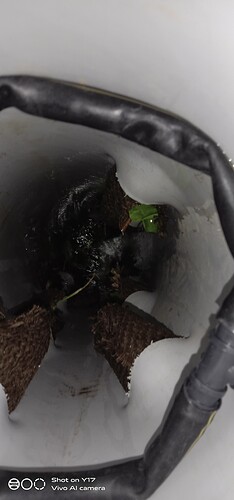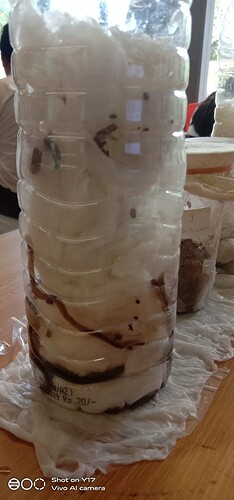Hi,
It isn’t that simple. They don’t have teeth. Do they “eat” paper? Yes, definitely. They also “eat” meat, eggshells, wood, leftover lunch, nematodes, bacteria… all kinds of things, really. If it can decompose, the earthworms can eat it. But there’s a catch.
Earthworms don’t have teeth. They can’t bite off the paper. They depend on other microbes to decompose it. A fresh sheet of tissue paper will usually have products that PREVENT decomposition, or just imagine packs of toilet rolls going bad in the bathroom cupboard because of the humidity…
The protection isn’t super effective and doesn’t last too long once wet, but if you’ve put a fresh roll of tissue paper and wetted it with clean water, there aren’t a lot of microbes there to get the decomposition started and even if there were, it takes them a while to do it. Doesn’t happen fast enough for the earthworm to survive.
You can observe this easily. Earthworms eat 24/7, literally with very few pauses. You’ve put several of them on tissue paper. How much “poop” have you observed? You can’t miss it on white tissue paper. It is black. There will be very little, at best if the earthworm managed to find something small enough for it to eat. If your experiment was good and “sterile”, it is out of luck.
If you want to give the earthworms a climate they won’t die in, here’s the bare minimum for making a good worm bin.
- a dark place for the worms to hide. They don’t like the light and get stressed by it. Thick cardboard, sawdust, cocopeat, works good. Depending on species of worms, some may want deeper bins - probably irrelevant to raising in a lab. Very moist, but not too wet. They want to be damp not wet - they “breathe” through their skin. Too much water will make them sluggish - actually they will try to flee to higher ground. Standing water in the bottom is a good indicator that things are too wet in there. Remember, they come OUT of the ground when it rains and head for drier places.
- Some source of food - this would be things that decompose fast - leaf clippings, banana peels… if the food is already rotting, excellent! I’d avoid things like citrus fruit/peels till the bin is well established and large in size - perhaps never in a lab environment. They can kill your worm by making the whole thing too acidic if the bin is too small. Big bins don’t care.
- TIME - ideally, a worm bin is made about a week or so before you put the worms in it - to give the food time to decompose. Alternatively, in a hurry, I suppose you could put food that is already decomposing. Or some of your rotifer or nematodes water. The earthworm will eat them.
- Wet soil is a quick and dirty hack if you need an instant worm bin. It usually has everything the earthworm needs. Some amount of already decomposing matter and organisms, cool, wet, dark and can be burrowed into…
They don’t care as much about water or air holes. As long as there isn’t standing water in the bin, they are good. And the air exchange from when their glass is opened to see them, etc is plenty for them to live. Closing the glass fully without holes could prevent escape artists.
Though keeping the glass open is the fastest test of whether you have given the earthworm good conditions to live. If the earthworm escapes out or tries to escape out, means the conditions need to be improved. A happy earthworm will vanish into the media to hide and unless you have a healthy bin with lots of worms, will leave you paranoid that there is no worm in the bin. lol.
Actually, putting several of them together is a good diea. You can observe reproduction too if you want then. Guess how long it will take you to breed one million worms? No really, guess.
Look, Earthworms excrete more than 90 % ( if not more) of the material they eat!
The content of the paper cup even after 2 months remained substantial!
We saw today at Neerja Modi School Jaipur 100s of Earthworms coming out of the wet soil after last evening/night rains!
We know for sure , they were not present yesterday before the rains!
Hence the attribute of them predicting rains seems to have not much evidence from our side…! …
Don’t you think @Vidyut, these researchers have evidence in front of them than mere speculation?!!
Let’s listen to them who are currently in the field, like @MeharMathur
@MeharMathur how about posting the tissue paper mashed up by Earthworms in just two months time?
This doesn’t happen before every rain. They will come up when wet - which is what you saw - this is normal. More like after a dry period - first big rain of the season, or rain after a long dry period - which is why I suspected air pressure changes, since it obviously doesn’t rain in the worm bin. It also doesn’t happen always. So I am trying to understand the trigger. Air pressure? Drastic change in air humidity making them think they can survive outside the soil too? No idea what the trigger/cause is.
No idea if this happens in nature and they simply come to higher places within the soil without us noticing, or if the reason for them to come up in nature exists indoors too, except without the rain, the timing is off…
@Arunan I have been raising earthworms for compost for almost a decade. I don’t go to the “field” to see them, they are a part of the household. I am talking from observation of their behavior.
And i can observe them without participating here, if any observation that is not convenient or part of the decided experiment is not evidence, just because I don’t have the explanation of why it happens.
Edited to add: After the above tweet was made, there was a very minor drizzle. In a day or two (not immediately), at dawn. Not even worth mentioning. Roads were dry when I woke, maid was excited because the worms predicted. Hardly “RAIN”. More like heavy dew. But around that time, there was also a cyclone and heavy rain in South India. This is what made me think of air pressure changes as a possible trigger. A cyclone elsewhere could have an impact on the air pressure in other places, even if it didn’t cause rain. Because otherwise, it was a normal killing summer here. No reason to think of rain. In fact, I think rain was late that year.
And now I find this: Why Are My Worms Trying to Escape? - Uncle Jim's Worm Farm
The condition of the tissue after two months. Due to the earthworms the tissue gets decomposed and starts to look soil like.
Why did they found it like a soil??
That was literally a gr8 job
As they can find the same nutrients that are available in soil.
We have made an earthworm culture 2months ago it is still surviving
In 2 months the tissue paper became like this?!!! @meharMathur
Fascinating. How many earthworms did you start with? How many do you have now?
Edit:
If they have settled for this long, that means they now have the microbes they need. Interesting that they survived long enough for them to develop enough. In theory, they should be able to continue indefinitely like this. Are they reproducing? (you will see small cocoons - they are like pale yellow balls)
If they are reproducing in these conditions, will be fascinating to see how they regulate their population in another two months and to what density they grow before they stabilize. If they are reproducing, in another month or less, the first hatchlings too will start laying cocoons. By 2-3 months, the glass should be full of wriggling worms Hello population boom.
Would appreciate photos of the culture as it progresses. This is very hard to see in a normal worm bin.
